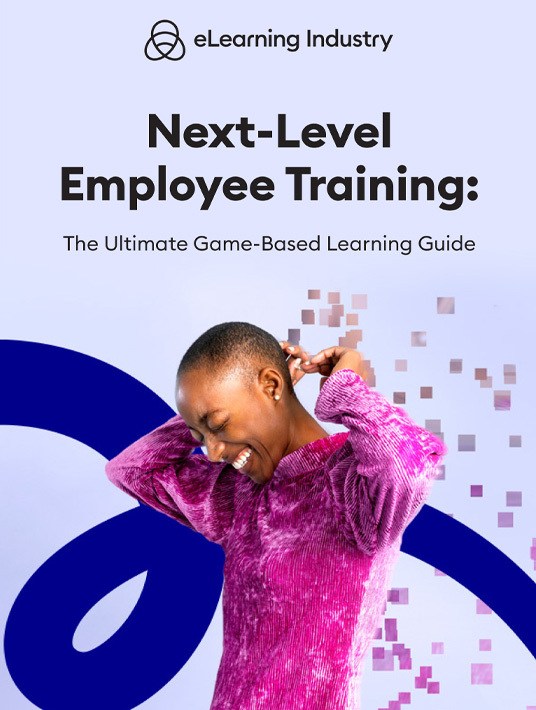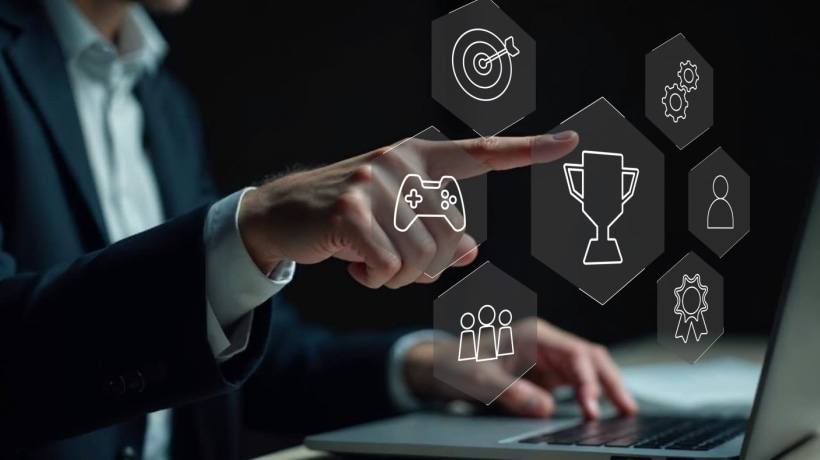Game-Based Learning Guidelines For Designers
Game-based learning has taken on a fresh form in the digital age. Classroom quiz shows have given way to wholly immersive online experiences that are accessible anytime, anywhere. You can use training games to impart skills, broaden knowledge, and help learners benefit from their mistakes. Unlike gamification, GBL takes a more targeted approach. Every game centers on a specific goal or challenge and reinforces the key takeaways. But how do you create a winning game-based learning course that surpasses their expectations and makes the information stick? Follow these game-based learning golden rules to achieve maximum results.

7 Top Game-Based Learning Rules
1. Every Game Design Starts With Objectives And Outcomes
The difference between games for entertainment and serious games is that there’s a purpose behind the latter—at least, one that goes beyond trying to get the bad guy or find all the hidden items. eLearning games must start with objectives and desired outcomes to achieve best results. Do you want to improve customer service scores or compliance stats? Who is the game intended for and which gaps do they need to bridge? Sure, entertainment is a secondary benefit, but it should never be the main aim of game-based learning.
2. Reinforce Favorable Behaviors
GBL gives you the ability to correct negative behaviors or habits, as well as reinforce positive ones to improve on-the-job performance. For example, your sales staff must be able to identify customers’ needs and find the perfect product. This requires a broad range of skills and tasks. Use training games to help them cultivate favorable behaviors and identify areas for improvement. It’s a more subtle and engaging way to point out the flaws so that they can address them autonomously.
3. Consider Mobile Users
Many employees use their mobile devices to access training materials. But some training games may not be suitable for the small screen. Bear in mind that on-the-go learners aren’t working with a mouse. They must click, tap, and swipe their way to the finish line. You should also avoid small text, buttons, and interactions that are more difficult to access on mobile devices. Lastly, give them control of the gaming experience. Can they pause in the middle of a scene and resume when they’re in a quiet environment? Are they able to lower the volume if they’re in a crowded area?
4. Add Real-World Risks And Repercussions
One of the perks of game-based learning is taking risks that don’t lead to real-world consequences. However, learners should still be aware of what those repercussions are and how to avoid them on the job. Incorporate realistic challenges, characters, and settings into your game-based learning design. Give employees a sense of the struggle so that they take calculated risks and benefit from their mistakes. There must also be some degree of pressure, but not enough to cause undue stress. The goal is to immerse them in the scenario so that they achieve an emotional connection and learn the error of their ways.
5. Integrate Social Learning
A common misconception about game-based learning is that it’s a solo activity. That there’s no room for social interactions. But you should incorporate collaborative elements to facilitate peer-based feedback and knowledge sharing. For example, leaderboards that motivate employees and prompt discussion. They might share tips to help their peers overcome obstacles and move up the board. Another social learning element to consider is discussion boards or social media groups. Employees finish the game and log in to the platform to talk about their performance and evaluate other approaches. They can also ask for advice and resource recommendations. For instance, other training games or real-world activities to bridge a skill gap that they just discovered.
6. Encourage Experimentation
This ties into the risk-taking component of eLearning games. Every training experience should encourage experimentation and self-reflection. For instance, offer learners three different options that lead them down unique paths. Ask them to reflect on their decision and if it achieved the best outcome. Would they do things differently next time around and why? They’re able to repeat the game until they get the results they’re looking for and identify all the hidden pain points. They can also try out new approaches to see where they lead. As an example, the game features a virtual customer who’s unhappy with their recent purchase. The employee might choose a different response this time to gauge the customer’s reaction. Then apply what they’ve learned in the real world to improve their service ratings.
7. Incorporate Gamification To Improve Learner Motivation
Even though gamification and GBL are two very distinct approaches, you can still blend them to achieve the best of both worlds. Incorporate rewards into your gaming experiences to fuel learner motivation. For example, they’re able to earn badges or points when they reach the best outcome or display certain skills. It’s a great way to provide feedback because incentives point out areas for improvement and strengths. They only earn that coveted badge if they know the compliance rules and master-related skills. Try to integrate a good blend of rewards to appeal to different styles, personality types, and preferences. For instance, introverts might shudder at the thought of leaderboards or other competitive game mechanics.
Conclusion
Apart from top-notch authoring tools and in-house talent, you’ll need golden rules to achieve the desired outcomes. These game-based learning guidelines are applicable in any niche. Encourage learners to take risks to reinforce behaviors and disclose hidden gaps. Then bring in the social learning component to facilitate peer-based feedback and knowledge sharing. Lastly, add some gamification elements to the mix to maintain the motivation and track learner performance.
Find the best eLearning content provider for gamification design in our online directory. You can search by industry, solutions, and specialization area to choose an outsourcing partner in your price bracket.
Download our eBook Next-Level Employee Training: The Ultimate Game-Based Learning Guide to target specific goals, challenges, and key takeaways with a GBL strategy.









